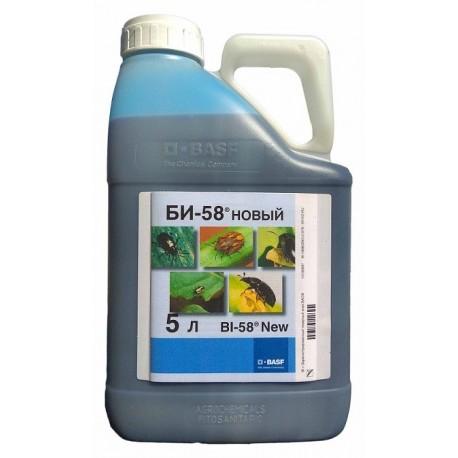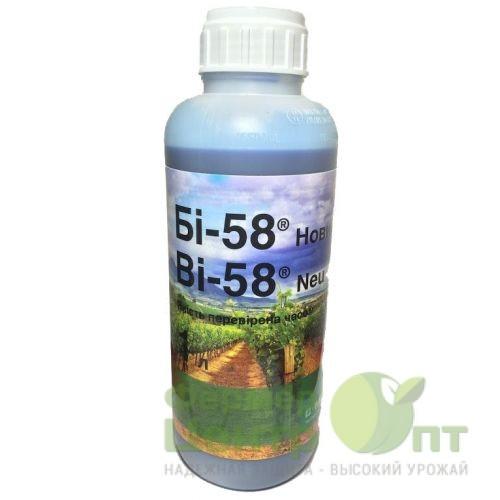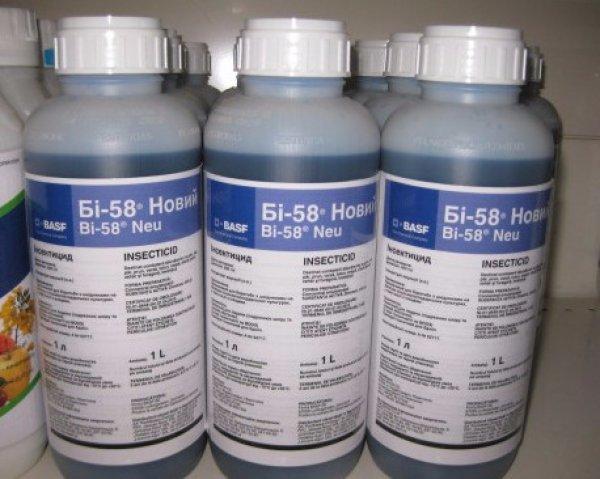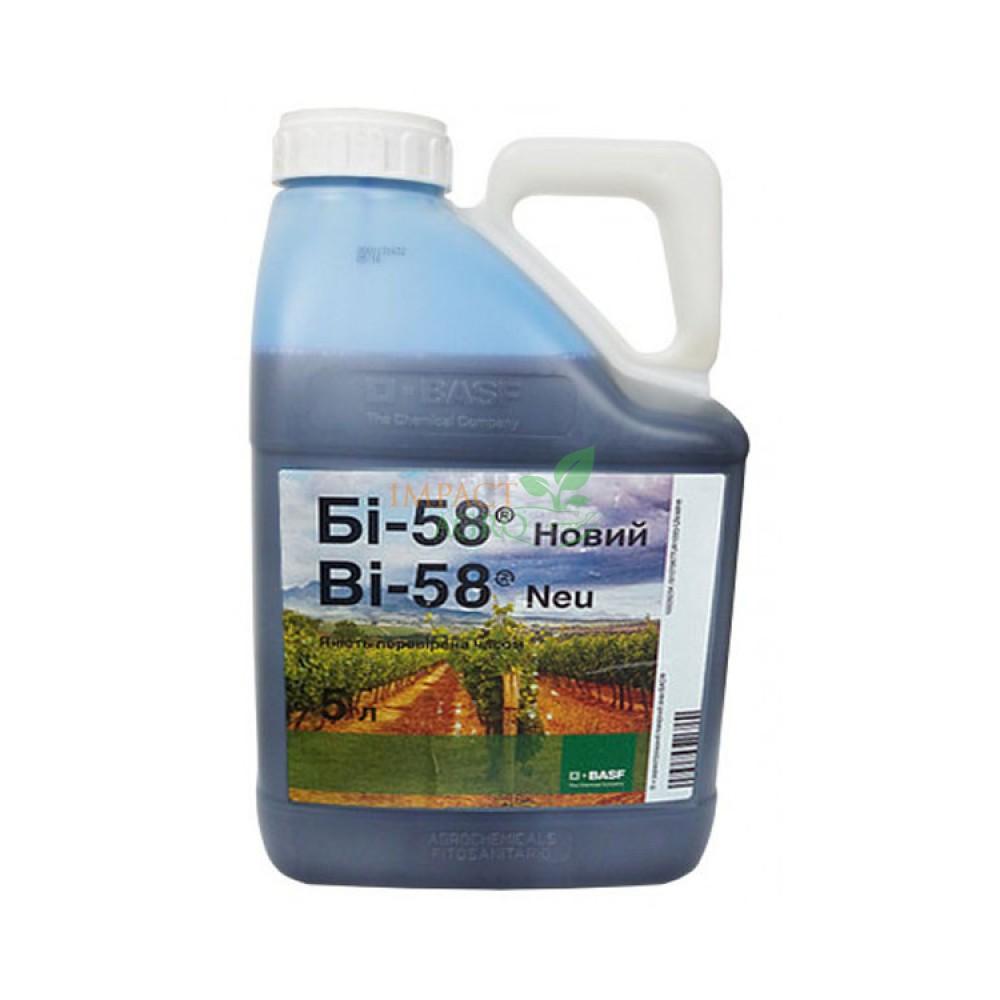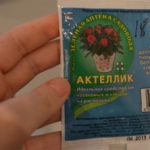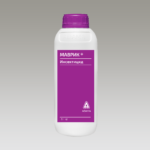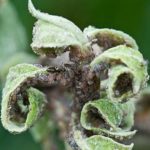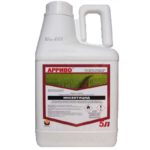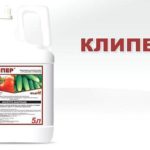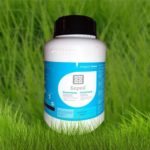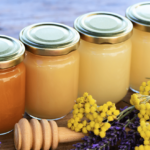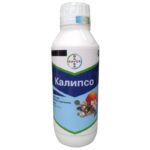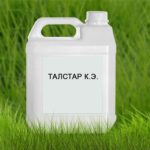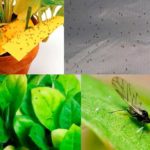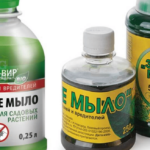Systemic insecticides with intestinal and contact action are often used to control insects and mites that damage fruit, vegetable and grain crops. Let's consider the action and purpose of the Bi-58 insecticide, its active substance, how to properly dilute the solution, in what concentration, and how to apply it according to the instructions. What precautions are necessary when working with the drug, how to store it and what can be replaced.
Composition and release form
The manufacturer BASF produces Bi-58 in the form of an emulsion concentrate, with dimethoate, an active substance that belongs to the chemical class FOS. It contains 400 g per 1 liter. The drug has insecticidal and acaricidal activity. Packaging – 1, 5 and 10 liter canisters.
Mechanism of action of the drug
“Bi-58” is used on many crops to destroy aphids, caterpillars, flies, bedbugs, thrips, scale insects, moths, leaf rollers, codling moths, flower beetles, cutworms, gall midges, leafhoppers and some types of mites.
This insecticide has a powerful and complex effect. The solution is absorbed by leaves and green parts of plants and then spreads evenly. Pests die as a result of feeding on poisoned plant sap. The insecticide also acts by contact; insects die when the solution comes into contact with them after spraying.
How to breed and use Bi-58
The instructions for use indicate that the drug can be used against a number of pests belonging to different orders. The product remains effective over a wide range of temperatures. The protective effect of the insecticide lasts 2-3 weeks. When used in the recommended dosage, it does not exhibit toxic effects on plants.
Application rate of "Bi-58" for various crops (in l per ha):
- wheat – 1-1.2;
- rye and barley – 1;
- oats – 0.7-1;
- apple, pear – 0.8-1.9;
- grapes – 1.2-2.8;
- vegetable crops for seeds – 0.5-0.9;
- potatoes from aphids – 2;
- moth control potatoes – 1.5-2;
- alfalfa for seeds, fiber flax – 0.5-0.9;
- hemp – 1.2-2;
- kenaf – 1.4;
- currants – 1.2-1.5;
- raspberries – 0.6-1.1;
- lupine – 0.7;
- sugar beet – 0.5-1.
On all crops, except grapes, apples and pears, “Bi-58” sprays pests during the growing season, spending 200-400 liters per hectare. 2 treatments are carried out, the waiting period is 1 month for grains, grapes and beets, for apples and pears – 40 days. Fruit trees are sprayed before and after flowering, consumption - 1000-1500 l, against flower beetle - 800-1000 l. Grapes are treated against mites, leaf rollers and scale insects with a solution of 600-1000 liters per hectare.
Special instructions and precautions
“Bi-58” refers to drugs with hazard class 3 for humans, that is, low toxic. The product is highly toxic for bees and has an insect hazard class of 1. Due to the high toxicity of the drug, it cannot be used on flowering trees and in gardens near which there are apiaries. Also, this powerful drug is toxic to fish, so it cannot be used in areas with plants located near water bodies and fishing enterprises.
When working with the Bi-58 preparation, you must wear protective clothing, you need to wear long sleeves, gloves on your hands, a respirator and goggles on your face to protect your nose and eyes from splashes of the solution, which can cause irritation and poisoning. .
After finishing work on spraying “Bi-58” you need to wash your face and hands with warm water and soap. If the solution suddenly gets on your skin or eyes, you should immediately rinse them with plenty of water. If the insecticide gets inside, you need to rinse your stomach: drink activated carbon tablets, wash them down with 1 liter of water and after 15 minutes induce vomiting. If after self-treatment the symptoms of poisoning do not disappear, then you need to consult a doctor.
Interaction with other tools
"Bi-58" mixes well with fungicides, especially pyrethroids, in tank mixtures. Can be mixed with fertilizers for foliar feeding. The exception is products with an alkaline reaction. The combined use of Bi-58 and fungicides reduces the dosage and consumption of both drugs, without reducing the effectiveness. This makes their use economically profitable. It is recommended to mix the insecticide with the drug "Fastak" if treatment is necessary with a large number of pests.
Terms of sale and storage
The product should be sold and stored only in factory canisters with closed lids. “Bi-58” needs to be stored for 3 years in warehouses, at moderate temperatures, in a dry and shaded place. Do not store food, medicine or animal feed near the insecticide; only other agricultural products and fertilizers can be stored. Once the savings period has expired, its effectiveness is significantly reduced. The solution is suitable for use for only 1 day.
Are there any analogues of the insecticide?
For dimethoate, the following analogs of “Bi-58” are registered for use in agriculture: “Alfa-Director”, “Binadin”, “Binom”, “Bishka”, “Danadim Power”, “Danadim”, “Di-68”, “Dimetron”, “Dimefos”, “Evrodim”, “Sirocco”, “Tagore”, “Landing”, “Ditox”, “Tarradim”, “Dimet”, “Fostran”, “Kinfos”, “Tibor”, “Dimetoat” -400", "Tod", "Dishance", "Rogor-S", "Rangoli-Duncan", "Dimetus".
“Bi-58” is a well-known powerful insecticide that can be used to treat grains, vegetables, berries, fruit crops, grapes, and flax against a variety of pests. Its action is complex: systemic, contact and intestinal. Because of this, the insecticide has strong effectiveness and a long-lasting protective effect.The drug is compatible with many pest control agents, some of them are even recommended to be used together to enhance the overall effect.

